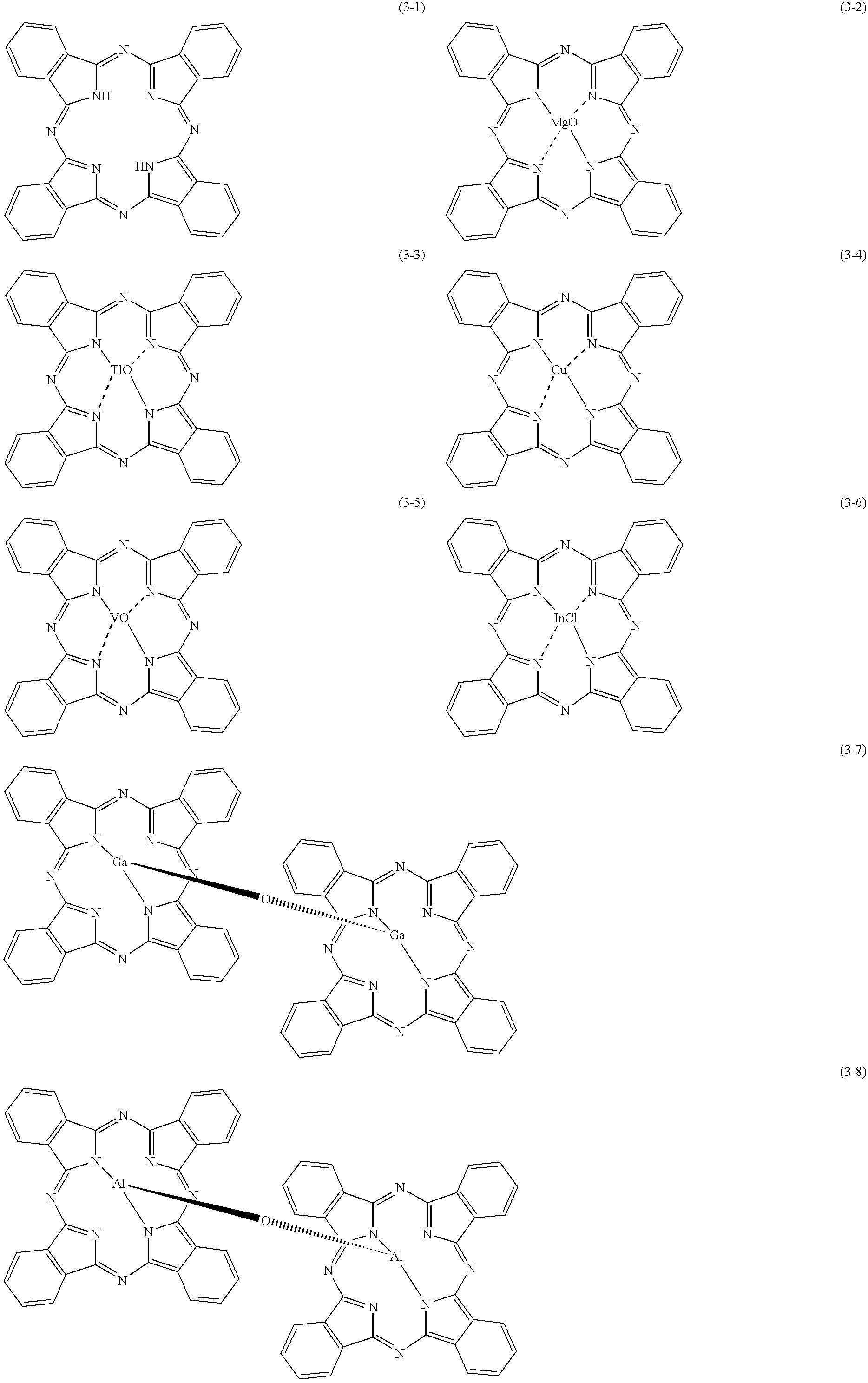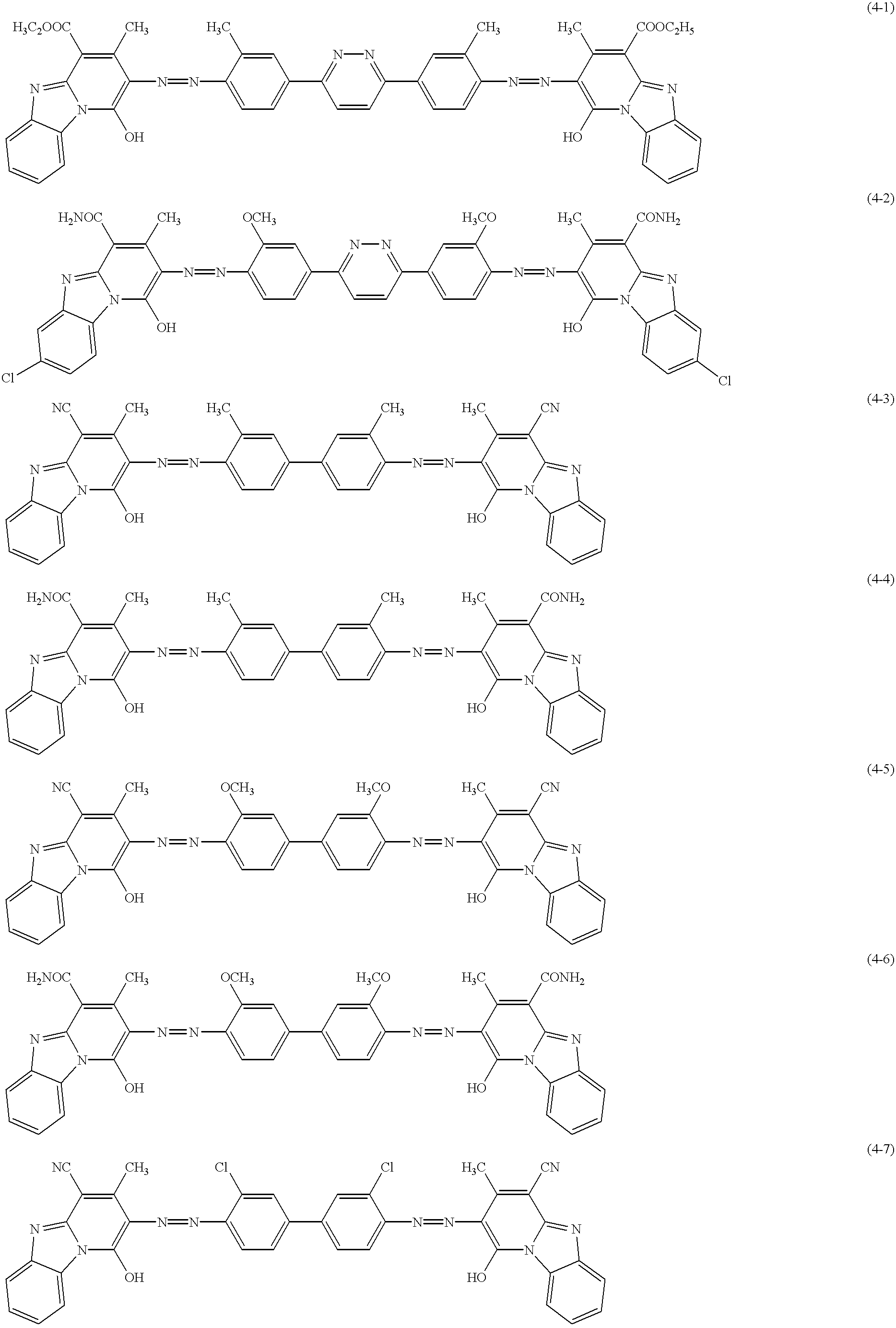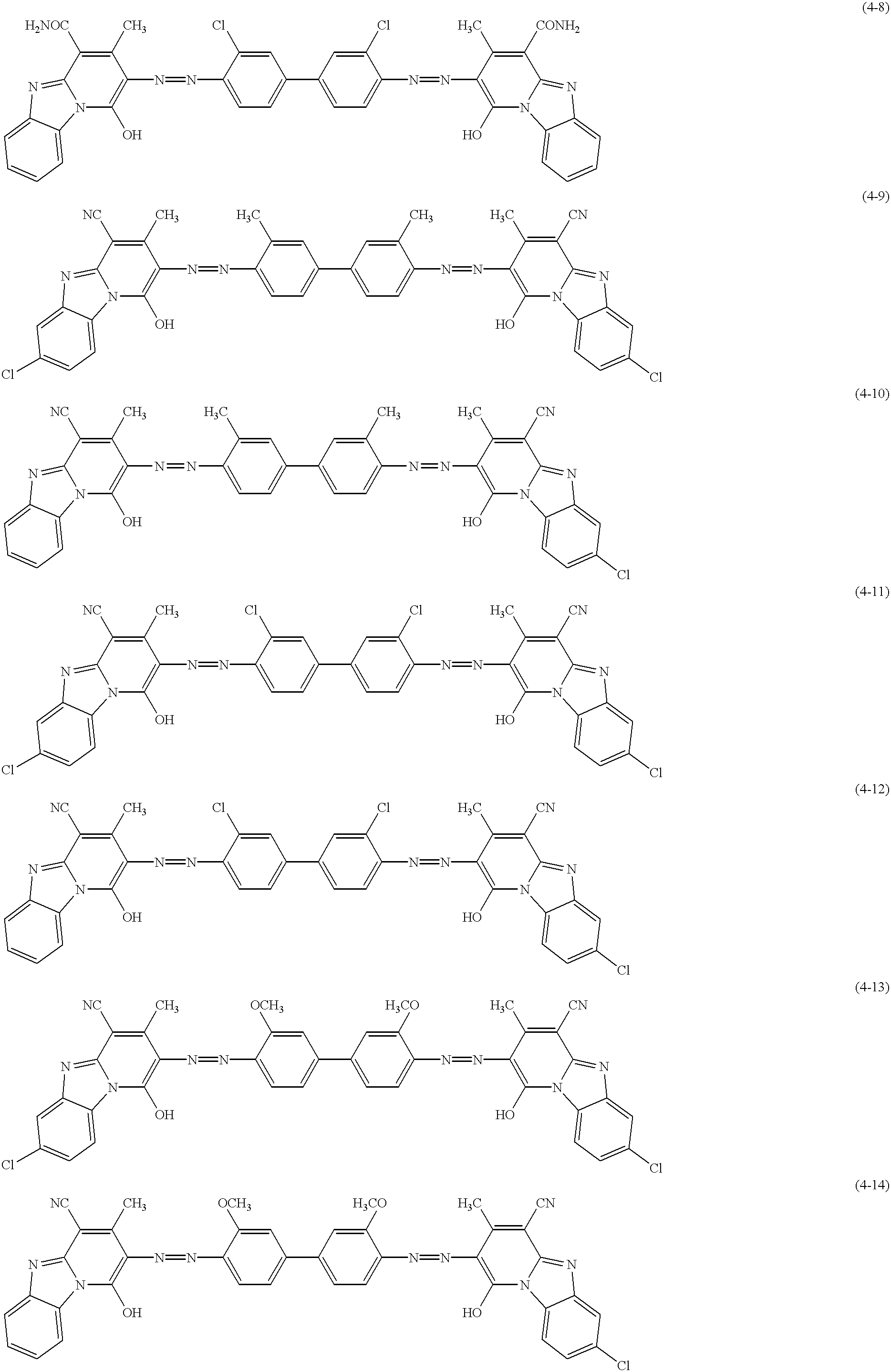Electrophotographic photoconductor
a photoconductor and electroctrophotography technology, applied in the direction of electrographic process apparatus, instruments, corona discharge, etc., can solve the problems of electrical characteristics that cannot reach the required level, electrical characteristics suffer from deterioration of electrical characteristics, and increase of residual potential, so as to achieve stable and excellent charging characteristics
- Summary
- Abstract
- Description
- Claims
- Application Information
AI Technical Summary
Benefits of technology
Problems solved by technology
Method used
Image
Examples
example 1
An undercoat layer with thickness of 1.5 .mu.m was formed on a conductive substrate of an aluminum cylinder by dip coating with a coating liquid and drying for 30 minutes at 145.degree. C. The coating liquid for the undercoat layer was prepared by dispersing 2.5 parts by weight of a vinyl-phenol resin: MARUKA LYNCUR MH-2 manufactured by Maruzen Petrochemical Co., Ltd., 2.5 parts by weight of a melamine resin: U-VAN 20HS manufactured by Mitsui Chemicals, Inc., and 5 parts by weight of aminosilane-treated titanium oxide particles, in a liquid consisting of 75 parts by weight of methanol and 15 parts by weight of butanol.
A charge generation layer with thickness of 0.2 .mu.m was formed on the undercoat layer by dip coating with a coating liquid and drying for 30 min at 80.degree. C. The coating liquid for the charge generation layer was prepared by dissolving and dispersing 1 part by weight of a charge generation material of titanylphthalocyanine and 1 part by weight of poly(vinyl butyr...
example 2
A photoconductor was produced in the same manner as in Example 1 except that the compound of the formula (5-3) was used as a charge transport material in place of the compound of the formula (5-11).
example 3
A photoconductor was produced in the same manner as in Example 1 except that the compound of the formula (5-4) was used as a charge transport material in place of the compound of the formula (5-11).
PUM
| Property | Measurement | Unit |
|---|---|---|
| wavelength | aaaaa | aaaaa |
| light wavelength | aaaaa | aaaaa |
| light wavelength | aaaaa | aaaaa |
Abstract
Description
Claims
Application Information
 Login to View More
Login to View More - R&D
- Intellectual Property
- Life Sciences
- Materials
- Tech Scout
- Unparalleled Data Quality
- Higher Quality Content
- 60% Fewer Hallucinations
Browse by: Latest US Patents, China's latest patents, Technical Efficacy Thesaurus, Application Domain, Technology Topic, Popular Technical Reports.
© 2025 PatSnap. All rights reserved.Legal|Privacy policy|Modern Slavery Act Transparency Statement|Sitemap|About US| Contact US: help@patsnap.com



